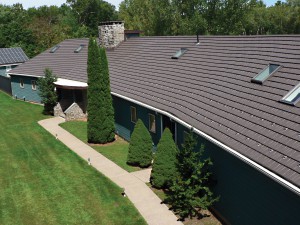Roof Ventilation: Why It’s Important
 Do you know if your roof is properly ventilated? If it’s not, your roof system could suffer from costly damage and your electricity bill, too! To understand the importance of roof ventilation and the potential effects of inadequate ventilation, we’ve pulled together some useful information.
Do you know if your roof is properly ventilated? If it’s not, your roof system could suffer from costly damage and your electricity bill, too! To understand the importance of roof ventilation and the potential effects of inadequate ventilation, we’ve pulled together some useful information.
The Effects Of Improper Ventilation
Roof ventilation not only affects your roof, but can affect your entire home’s heating and cooling systems. During cold seasons roof ventilation helps to release any heat collected in the attic. Heat that accumulates in the attic is dangerous during the winter season because it can prematurely thaw snow and ice on your roof, leading to ice dams. During warmer weather, improper roof ventilation will trap heat in the attic and have a significant impact on your cooling systems, making your home less energy efficient. Proper roof ventilation is crucial in releasing unwanted stored heat in the attic to protect your roof and your climate control systems.
Another danger of poor roof ventilation is moisture buildup. Without an adequate way to escape, trapped moisture can have significantly damaging effects to the substructure of your roof. Overtime moisture could cause mold and mildew could develop, nails to rust and even break and your roof deck to rot. Adequate ventilation will provide an escape route for heat and moisture and prevent these costly calamities.
Roof Ventilation Methods
There are several types of roof ventilation methods and the best options vary from home to home. To find out what ventilation method is best for your home and roof system consult an expert roofer, like GT Donaghue Construction & Metal Roofing. But first, we’ll give you a basic run down. Here are some of the main methods:
Soffit Vents & Ridge Vents: These two ventilation systems work in tandem. Proper ventilation systems provide a point of entry and point of exit. Soffit vents are found underneath a roof’s overhang. Alternatively, ridge vents run along the peak of a roof, providing an escape route for hot air and any moisture in the attic. Both of these ventilation systems work together and allow your home and building to breathe.
Attic Fans: To really help with ventilation, attic fans or whole house fans may be installed to draw out warm attic air through roof vents and out of your home.
Gable Vents: These vents can be found on either end of your home under the peak of your roof and on the siding. They help air flow out of the attic, while preventing snow and moisture to enter.
For more information, a roof inspection or installation and maintenance services, don’t hesitate to call us at GT Donaghue Construction & Roofing. We’re more than happy to help establish a healthy and safe roof system on your home. Call or click here for a quote!
